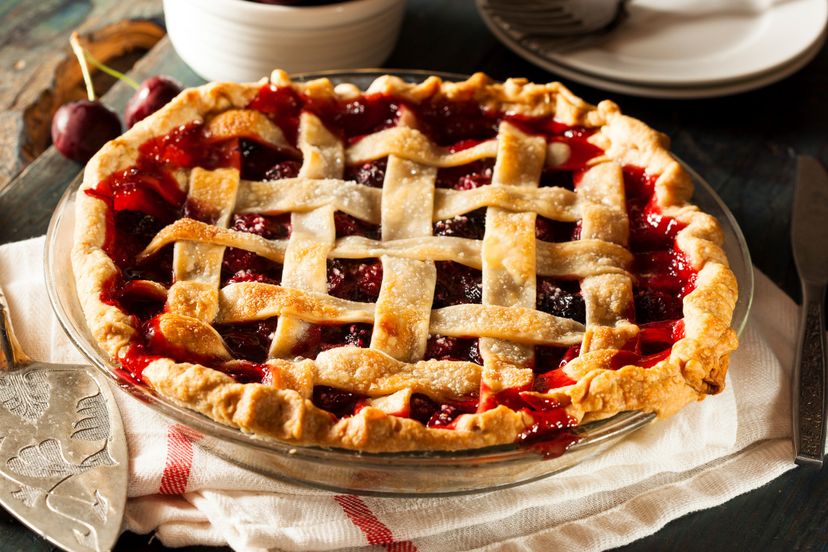
About This Quiz
Pie is the perfect finish to any meal, whether it's Sunday dinner or a holiday feast. Grab a slice and dig in to our quiz on all things pie!Chess pie likely comes from the word "cheese," as the standard recipe for the dessert closely resembles Colonial cheesecakes.
Thanks to a 2006 House bill, the key lime concoction is Florida's official state pie.
A key lime pie relies on canned condensed milk - a throwback to the pre-1930s period when fresh milk simply wasn't available in the Florida keys.
Advertisement
No part of the apple pie, including the finished dessert itself, originated in the U.S. Instead, the apple pie most likely came from England.
The first apple pie recipe appeared in a 1381 cookbook called "The Forme of Cury," which was gifted to Queen Elizabeth in 1390.
The ancient Greeks and Romans chowed down on meat-filled pies, which used a tough crust made from flour and water to hold the concoction together.
Advertisement
The earliest known pie recipe called for goat cheese and honey and dates back to ancient Rome.
In England and Colonial America, the pie was known as a coffin or coffyn, and the crust was not meant to be eaten.
"Pie" likely comes from "magpie," because early cooks used all kinds of odds and ends to fill pie.
Advertisement
In the earliest days of pie consumption, sugar was way too expensive for the average diner, so most pies contained meats like beef, duck or lamb.
There's no evidence that pie was available to the Pilgrims and Native Americans in 1621. If they did put a pie together, it certainly wouldn't be the sweet potato or pumpkin dishes associated with modern Thanksgiving celebrations.
A British cookbook published the earliest-known pumpkin pie recipe in 1675. It called for boiled and spiced pumpkin, but it still wasn't the sweet treat we know today.
Advertisement
The Dutch apple pie has a rich, buttery crust topped with walnuts, which are not typically found on traditional apple pies.
The tarte tatin is an upside-down pie, with butter, sugar and fruit on top and a crust on the bottom.
Made with beaten egg whites for a light, fluffy texture, the chiffon pie was traditionally called a sissy pie.
Advertisement
Funeral pies traditionally contain dried raisins, which offer a sweet flavor yet require no refrigeration.
Icebox pie is the perfect treat for hot summer days, because it's designed to set in the fridge - no oven required.
The eel-like lamprey was a delicacy in Medieval England and was mixed with wine and spices to make the traditional lamprey pie.
Advertisement
Shoofly pie is similar to coffee cake and traditionally contains molasses and brown sugar.
Made from a simple mix of creamed butter and sugar, the sugar cream pie is also known as the Hoosier pie and the Quebec sugar cream pie.
Pie served a la mode has a scoop of ice cream on top to sweeten the deal.
Advertisement
The traditional cottage pie is savory and contains beef, potatoes and veggies.
A shepherd's pie is similar to a cottage pie but uses lamb in place of beef.
The brown Betty dates back to Colonial times and consists of layers of fruit and sweet, crumbly bits of crust.
Advertisement
By definition, the cobbler is a deep-dish fruit pie with a thick, biscuitlike crust.
North Carolina is home to the sonker, or zonker - a rectangular cobblerlike dessert.
The first fruit pies, in the form of tarts or pastries, were whipped up in the 1500s.
Advertisement
According to British tradition, Queen Elizabeth baked the first cherry pie while toiling in her kitchen - a story that's probably more fiction than fact.
The sweet potato pie recipe dates back to 1881, when it was published by former slave Abby Fisher.
Pie lovers on the go may appreciate the fast food offering, which McDonald's started selling in 1968.
Advertisement